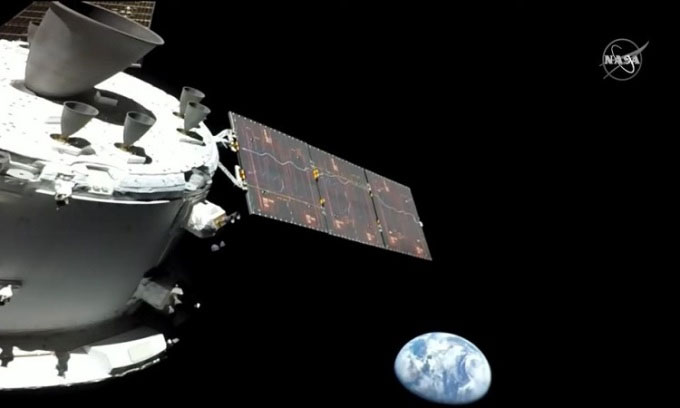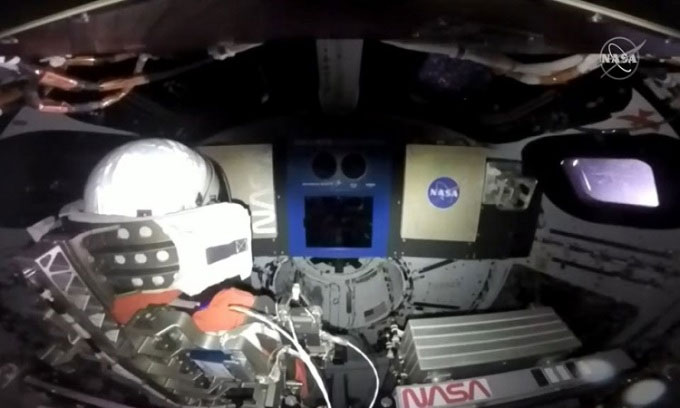The Orion spacecraft captured an image of Earth while traveling 1/5 of the distance to the Moon at nearly 8,800 km/h during the Artemis 1 mission.

The Orion spacecraft captures Earth on its journey to the Moon. (Photo: NASA)
The mission was launched on the Space Launch System (SLS) super rocket at 1:47 PM on November 16, Hanoi time, to conduct an uncrewed flight around the Moon. The selfie taken shows the Orion spacecraft’s hardware and a partially illuminated disk of Earth after more than 9 hours of flight for Artemis 1. At the time the photo was taken, the spacecraft was about 92,000 km from Earth, roughly 1/5 of the distance between Earth and the Moon, traveling at nearly 8,800 km/h.
“We haven’t seen an image of Earth from this spacecraft since 1972, following the last Apollo mission 50 years ago,” NASA spokesperson Sandra Jones shared. “The image of the blue planet amidst the darkness of space will captivate the imagination of a new generation – the Artemis generation.”
In addition to Earth, the selfie reveals parts of the Orion spacecraft in the left corner, including the orbital control system, a large engine providing thrust for the lunar flyby, and solar panels. The vehicle is equipped with a total of 4 solar panels arranged in a cross pattern.
“Each of the 4 solar panels on the Orion spacecraft has a commercial camera mounted on the edge of the wing, meticulously adjusted for space use, providing images from outside the spacecraft,” said David Melendrez, the imaging integration lead for the Orion program at NASA’s Johnson Space Center in Houston.

The Moonikin Campos mannequin sitting in the command seat of the Orion spacecraft. (Photo: NASA)
Besides the selfie, NASA also shared images from inside the cabin, showing the “passenger” known as Moonikin Campos, testing the orange flight suit that astronauts will wear on the next flight. Additionally, the Callisto experiment, a collaboration between NASA and Amazon aimed at testing Alexa technology in space, also appeared in the photo. One of the Orion spacecraft’s windows is also visible in the right corner of the frame.
According to NASA, there are two other cameras located inside the spacecraft: one camera facing out of the front window of the cabin and the other positioned at the hatch on top of the spacecraft, allowing monitoring of the launch abort system separating from the vehicle and the parachute deployment process when Orion lands back on Earth.
The Artemis 1 mission will spend the next 5 days traveling to the Moon. The spacecraft will get closest to the Moon on November 21, spending several days orbiting the Moon before turning back. The 25-day mission will conclude on December 11.

















































